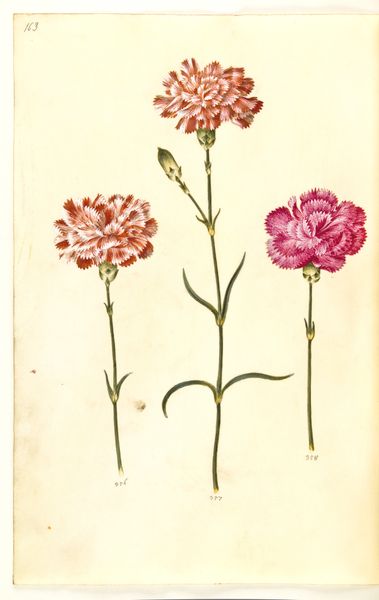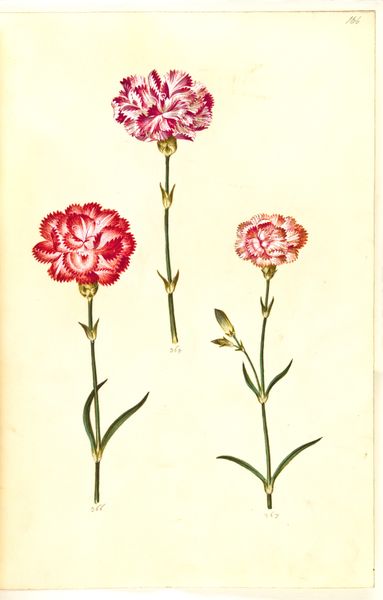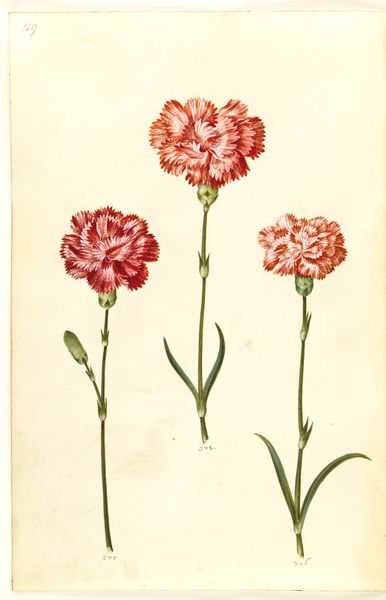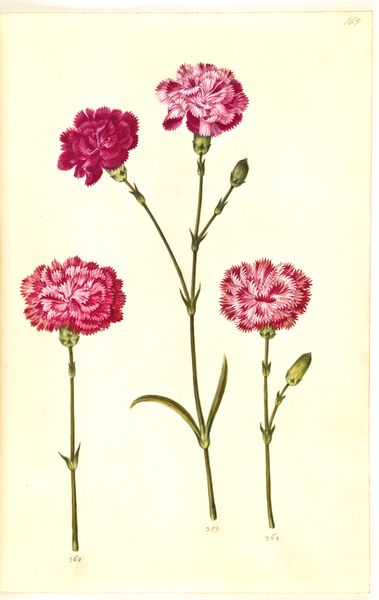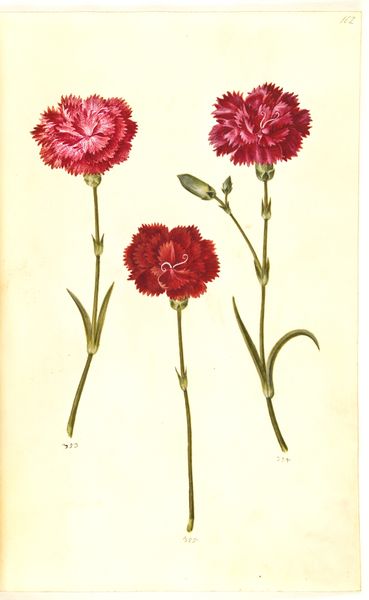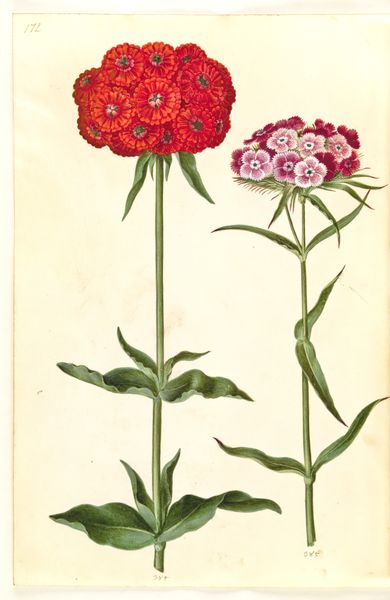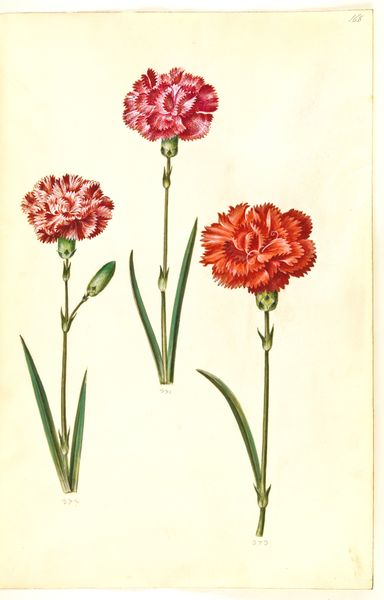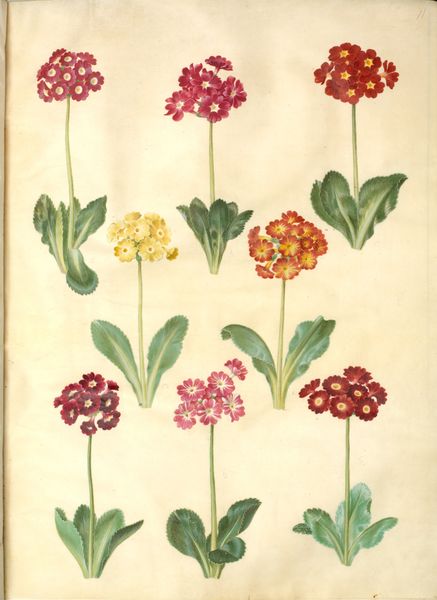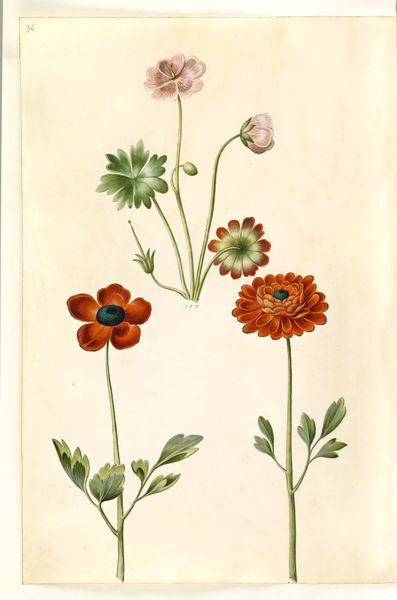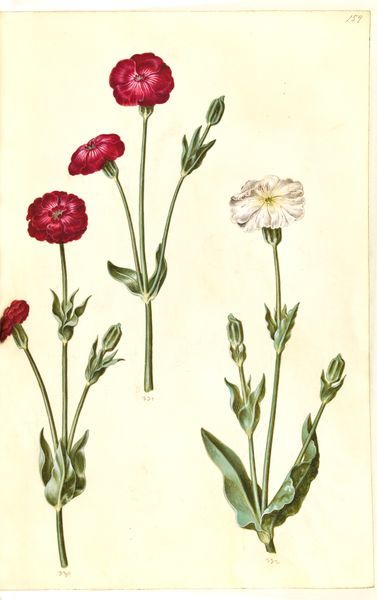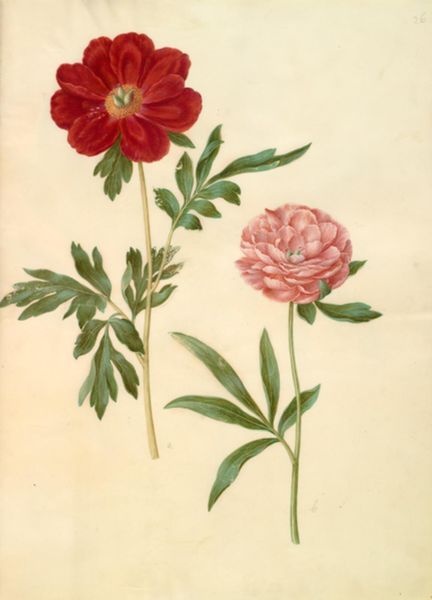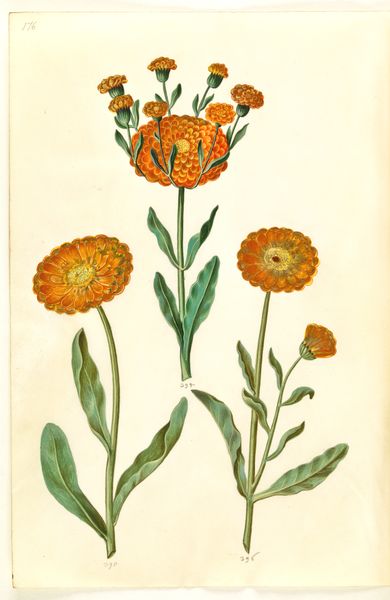
drawing, gouache
#
drawing
#
gouache
#
academic-art
#
botanical art
Dimensions: 375 mm (height) x 265 mm (width) x 85 mm (depth) (monteringsmaal), 358 mm (height) x 250 mm (width) (bladmaal)
Hans Simon Holtzbecker made this representation of Dianthus caryophyllus, or carnations, using watercolor and gouache in seventeenth-century Northern Europe. Botanical illustrations like this were part of a larger cultural phenomenon: the rise of scientific inquiry, often supported by wealthy patrons and institutions. The images create meaning through a combination of visual and cultural codes. The careful attention to detail speaks to the growing importance of empirical observation. The choice of flowers as a subject reflects the interest of wealthy elites in gardens and the collection of exotic plants. Holtzbecker worked in a time when art served not only aesthetic purposes but also contributed to the expanding body of scientific knowledge. Art historians can use sources such as horticultural records, scientific treatises, and patronage documents to understand the social and institutional context in which Holtzbecker’s botanical illustrations were made. Examining these sources reminds us that the meaning of art is contingent on the social and institutional circumstances in which it is produced and received.
Comments
No comments
Be the first to comment and join the conversation on the ultimate creative platform.
